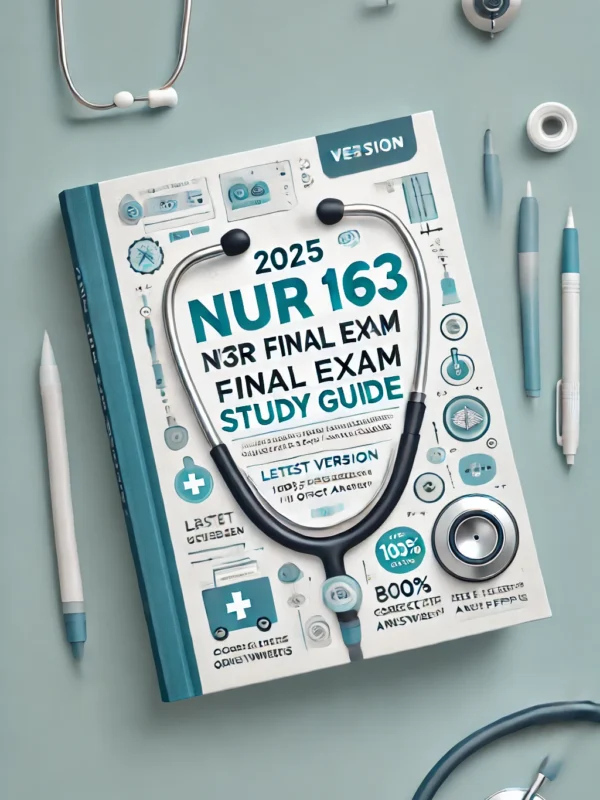-
Comprehensive Study Guide: Covers all core fundamentals topics like patient care, safety, and infection control.
-
Question Breakdown: Detailed analysis of exam-style questions with answers.
-
Test-Taking Strategies: Proven tips to boost your confidence and performance.
-
Updated for 2025: Aligned with the latest HESI exam standards.
Start your journey to HESI success with ExamsHut today!
Preview
When assessing a client with wrist restraints, the nurse observes that the fingers on the right
hand are blue. What action should the nurse implement first?
A. Loosen the right wrist restraint.
B. Apply a pulse oximeter to the right hand.
C. Compare hand color bilaterally.
D. Palpate the right radial pulse. – – correct ans- -The priority nursing action is to restore
circulation by loosening the restraint (A), because blue fingers (cyanosis) indicates decreased
circulation. (C and D) are also important nursing interventions, but do not have the priority of
(A). Pulse oximetry (B) measures the saturation of hemoglobin with oxygen and is not
indicated in situations where the cyanosis is related to mechanical compression (the
restraints).
Correct Answer: A
The nurse is assessing the nutritional status of several clients. Which client has the greatest
nutritional need for additional intake of protein?
A. A college-age track runner with a sprained ankle.
B. A lactating woman nursing her 3-day-old infant.
C. A school-aged child with Type 2 diabetes.
D. An elderly man being treated for a peptic ulcer. – – correct ans- -A lactating woman (B) has the
greatest need for additional protein intake. (A, C, and D) are all conditions that require
protein, but do not have the increased metabolic protein demands of lactation.
Correct Answer: B
A client is in the radiology department at 0900 when the prescription levofloxacin
(Levaquin) 500 mg IV q24h is scheduled to be administered. The client returns to the unit at
1300. What is the best intervention for the nurse to implement?
A. Contact the healthcare provider and complete a medication variance form.
B. Administer the Levaquin at 1300 and resume the 0900 schedule in the morning.
C. Notify the charge nurse and complete an incident report to explain the missed dose.
D. Give the missed dose at 1300 and change the schedule to administer daily at 1300. – – correct
ans- -To ensure that a therapeutic level of medication is maintained, the nurse should
administer the missed dose as soon as possible, and revise the administration schedule
accordingly to prevent dangerously increasing the level of the medication in the bloodstream
(D). The nurse should document the reason for the late dose, but (A and C) are not
warranted. (B) could result in increased blood levels of the drug.












Reviews
There are no reviews yet.